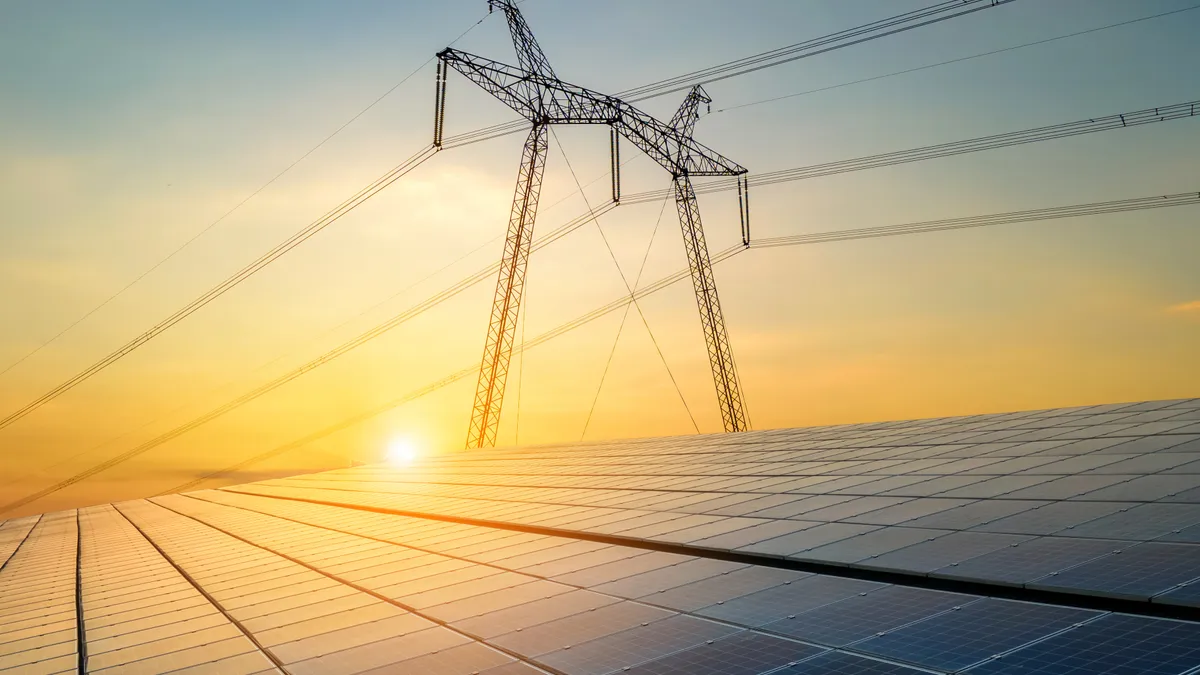Dive Brief:
-
Costs to consumers from congestion on the U.S. power grid more than doubled to an estimated $13.3 billion in 2021 from the year before, and will likely keep rising until transmission capacity is built, according to a report released Thursday by Grid Strategies, a consulting firm.
-
At $2.85 billion, the Midcontinent Independent System Operator led the way in congestion costs in 2021, followed by the Electric Reliability Council of Texas at $2.1 billion and the Southwest Power Pool at $1.2 billion.
-
Consumers and states should press for solutions to “high and rising” congestion costs through relatively inexpensive grid-enhancing technologies that can be quickly installed or longer-term transmission investments, according to Rob Gramlich, Grid Strategies president. “If we just keep increasing demands on the grid without increasing [transmission] supply, we're going to keep getting more and more congestion costs,” he said.
Dive Insight:
Congestion costs occur when there isn’t enough transmission capacity to deliver low-cost power to consumers and the demand is met by more expensive sources of electricity. Consumers pay the higher costs.
Since the last wave of major U.S. transmission development about 10 years ago, the transmission system is running out of spare capacity, contributing to increased grid congestion, according to Gramlich.
Congestion charges have generally increased in the regional transmission organizations and independent system operators that measure the costs and in the other parts of the U.S. that don’t, according to the report. The report measured internal RTO congestion, not between grid operators.
U.S.-wide grid congestion cost $6.5 billion in 2016, $7.3 billion in 2017, $8.8 billion in 2018, $6.4 billion in 2019, $6.7 billion in 2020 and $13.3 billion in 2021, according to Grid Strategies’ estimates. The costs fluctuated based on factors such as natural gas prices, the COVID-19 pandemic and generator additions, according to the report.
A wind farm, for example, came online in Maine in late 2020, driving up congestion because of a lack of transmission additions, Grid Strategies said.
Generally, congestion costs have been growing in RTOs and ISOs.

No entity in the U.S. is responsible for reducing grid congestion, according to Gramlich.
“The RTOS don't have that job and transmission owners don't have that job,” he said, noting the United Kingdom’s grid operator finds ways to reduce congestion.
The Federal Energy Regulatory Commission is exploring the issue as part of an inquiry into transmission incentives launched in 2019. The WATT Coalition and Advanced Energy United urged FERC to allow transmission owners to share in cost savings if they add transmission capacity to reduce congestion, according to Gramlich.
The growing queues of generators seeking to connect to the grid are a symptom of the maxed out transmission system, he said. The Inflation Reduction Act is expected to spur more wind, solar and energy storage seeking access to the transmission system while also driving up electric demand as people buy more electric vehicles and switch to electric heating.
The Environmental Protection Agency this week proposed tighter auto tailpipe emissions standards that the Biden administration expects will increase EVs to 67% of all light-duty vehicle sales for the 2032 model year, up from about 5.6% last year.
“Every transmission planner in the country this week should be revising their power demand estimates upward based on the EV penetration expectations and that should feed into more transmission being planned,” Gramlich said.
Also, extreme weather has a significant effect on congestion costs, according to the report. “Major power system failures and instances of congestion are likely to increase without transmission expansion,” Grid Strategies said in the report.















